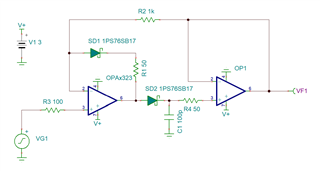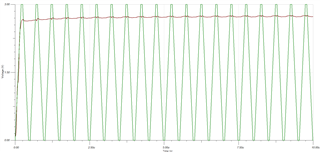Is there a way to estimate how well this configuration works on a single supply (preferably 3V)? I'm looking for a sub $1 solution, is there a recommendation for a lower cost, general purpose op amp to use instead of OPA656/OPA727/THS4631?
-
Ask a related question
What is a related question?A related question is a question created from another question. When the related question is created, it will be automatically linked to the original question.




